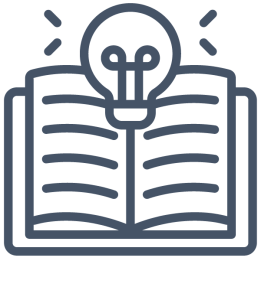
Overview
As an undergraduate student, it is critical that you have a strong understanding of academic integrity and how this core scholarly value must inform your work.
Scholarly communities in higher education institutions (including Canadian universities) share some common ideas and principles that define academic integrity.
However, each institution will have its own set of policies and procedures for enforcing academic integrity and responding to violations of these principles.
This week, we define academic integrity and introduce writing strategies that will enable you to ensure that you write with integrity.
For example, a central tenet or principle of academic integrity is that we credit the ideas and words of others, i.e., we provide proper attribution for the work of others. When we do not properly attribute or cite the works of others, we plagiarize.
We will also begin to talk about the summative project for this course, a literature review. A literature review is a genre (category or type) of academic writing that is valuable to scholars. There are various forms of literature reviews but essentially, a literature review is designed to allow scholars to easily understand the work being done on a given topic in a given field (or fields) at a given moment in time.
With a strong understanding and knowledge of the work being done in a given area over time, scholars can meaningfully contribute to the field through their own research.
They can add to the work done by other scholars by identifying gaps or needs in the current research and doing their studies that help to fill the knowledge gap(s).
As such, a literature review is valuable not just as a source of information about the research that has been and is being done in a field, but also as a source of information about new research topics.
Readings
Core readings & videos (all groups)
Bullock, R., Brody, M., & Weinger, F. (2026). The little seagull handbook. Fifth edition. W.W, Norton & Company.
- Read W-2: Academic contexts
- InQuizitive:
- o Rhetorical situations
Creswell, & Creswell, J. D. (2018). Research design: qualitative, quantitative, and mixed methods approaches (5th ed.). SAGE Publications, Inc.
- Chapter 2: Review of the literature
Maccallum, L. (2020). Choosing and using sources: A guide to academic research. 1st
Canadian edition. Ohio State University.
- Chapter 34 Ethical use and citing sources.
- Chapter 35: Why cite sources.
- Chapter 36: Challenges in citing sources.
Reading Club group readings
Groups 1 & 3
Forrer, D. (2018, February) Literature map [Video]. YouTube. https://youtu.be/YPhqCIL9u6I.(6:15 minutes)
FYSM1001A Syllabus: Statement on plagiarism
Groups 2 & 5
Charalampous, A., & Darra, M. (2024). The effect of teacher’s feedback on student academic achievement: A literature review. Journal of Education and
Learning, 14(1), 42. https://doi.org/10.5539/jel.v14n1p42
Group 3
Yancy McGuire, S. with McGuire, S. (2018). Teach yourself how to learn. Stylus Publishing.
- Chapter 7: How your emotions affect your motivation and learning
Before class activities
 Key questions to ask while reading and watching
Key questions to ask while reading and watching
- What is academic integrity?
- How does academic integrity inform your research and writing?
- What is the purpose of a literature review?
 “Pile of words”: Group and label key concepts
“Pile of words”: Group and label key concepts
Organize into three lists of similar terms and label each list (include definition of each label).
Remember: You may already understand some of these ideas relatively well and others may be new to you—you are encouraged to look up (e.g., in a dictionary or encyclopedia) the unfamiliar concepts in order to create your lists.
Make note of your reasons for grouping the ideas together as you will share them in class. These are self-paced individual activities, for which there are no right or wrong answers. The instructor will not grade this work.
 Predict a learning outcome
Predict a learning outcome
After class activities
After class, annotate each reading for key ideas. For videos and podcasts, you can annotate the transcript.
Summarize the author’s key ideas from each reading.
Highlight the following information:
- Purpose of the reading;
- Scope (the extent of the study);
- Thesis (the main argument[s]);
- Method (research method if applicable);
- Outcome(s) and conclusion.
Respond to the following statement about the readings: do you agree or disagree with the statement and why?
“[A] literature review helps to determine whether the topic is worth studying, and it provides insights into ways in which the researcher can limit the scope to a needed area of inquiry” (Creswell & Creswell, 2018).
Did this reading provide any inspiration or insights you can use in this or any of your other classes? If yes, what is the inspiration and/or what are the insights?

